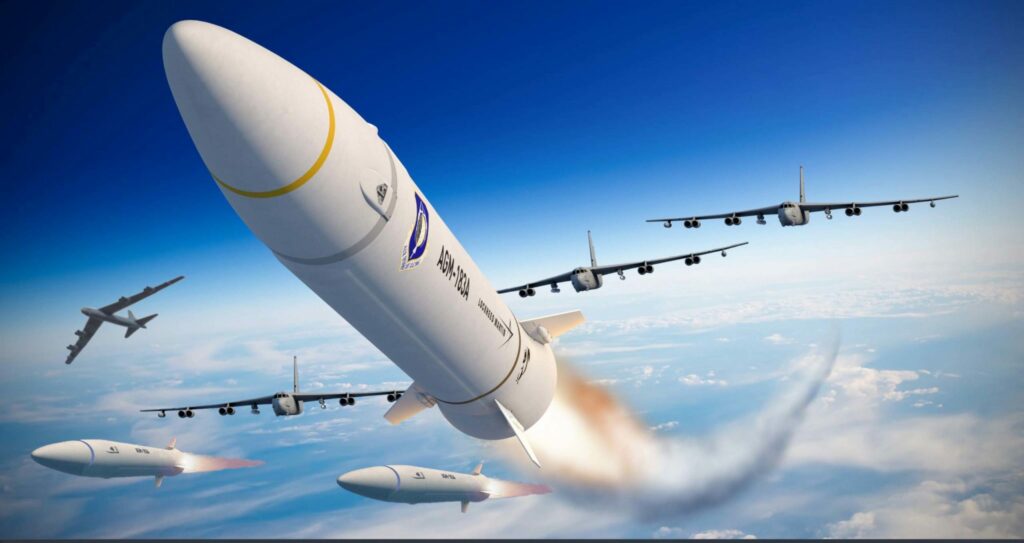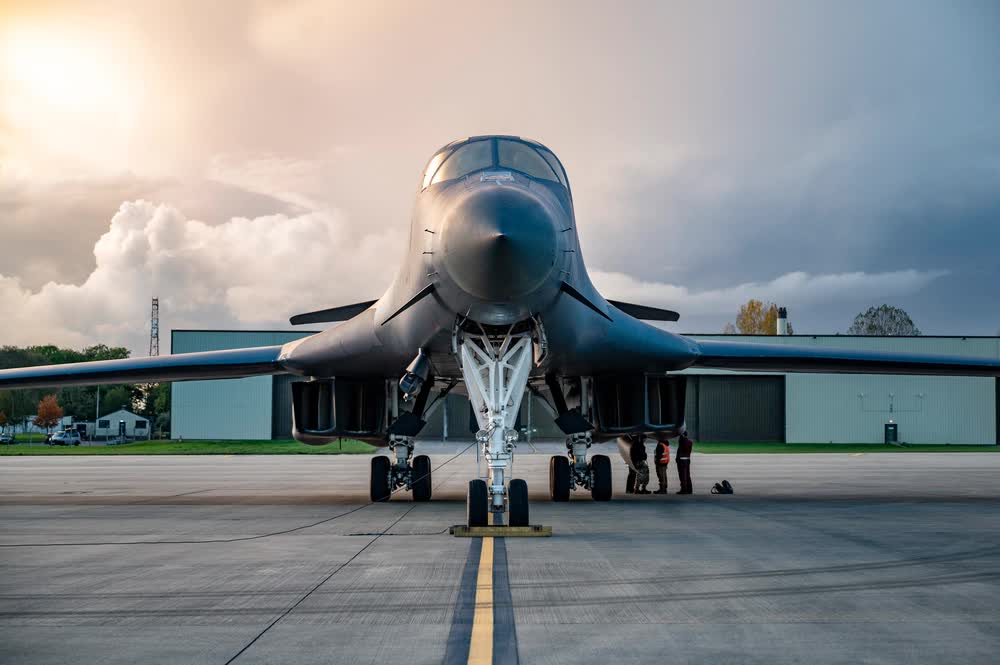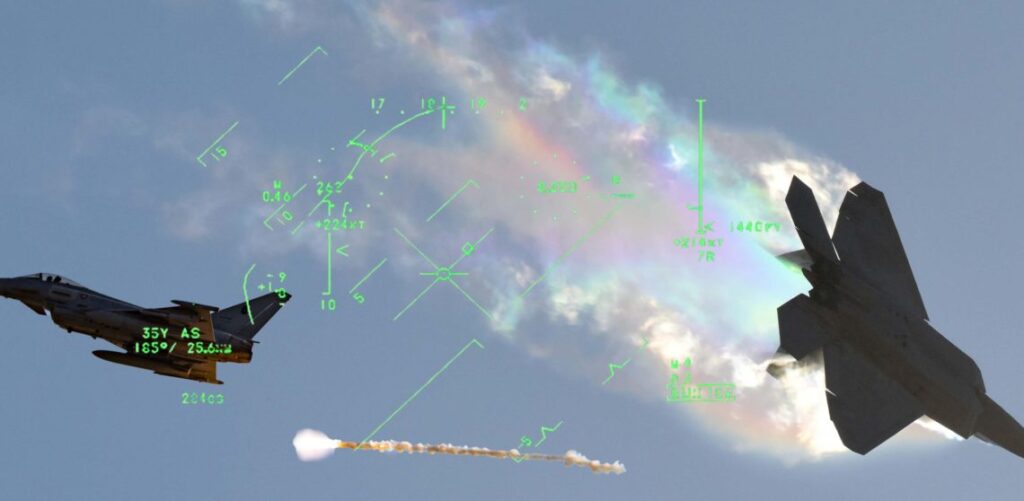Earlier this week, Lockheed Martin and the Air Force announced a successful ARRW hypersonic missile test, marking the program’s third consecutive success. Unlike previous tests, however, this launch was of an “All-Up-Round” or AUR missile — a term insiders use to describe a complete weapon.
In other words, the successful December 9 ARRW launch was of a prototype very similar to the complete weapon that will enter service.
According to a press release issued by the Air Force, the weapon was launched from a B-52 Stratofortress on December 9 off the coast of Southern California, reached speeds in excess of Mach 5, and landed within its designated target zone, successfully completing every aspect of the test.
“The ARRW team successfully designed and tested an air-launched hypersonic missile in five years,” said Brig. Gen. Jason Bartolomei, Armament Directorate Program Executive Officer. “I am immensely proud of the tenacity and dedication this team has shown to provide a vital capability to our warfighter.”

ARRW is an air-launched boost-glide weapon, one of two modern types of hypersonics. Boost-glide weapons are similar in theory to ballistic missiles—they’re carried aloft and to high speeds by a conventional rocket booster before separating and gliding, unpowered, toward their targets at speeds in excess of Mach 5. They tend to follow a more suppressed ballistic flight path than previous missiles, however, and importantly, can maneuver unpredictably during their descent.
These are the only forms of hypersonic weapons that have reached service for any nation, with Russia’s Avangard and China’s DF-ZF boost-glide systems both entering service in 2019.

Russia’s KH-47M2 Kinzhal has been highly touted as a hypersonic missile, though based on it being an air-launched variant of the 9K720 Iskander-M, a Soviet-era short-range ballistic missile, Kinzhal’s status as an actual modern hypersonic weapon is tenuous, to say the least.
The other modern form of hypersonic weapons, scramjet-powered cruise missiles, are also heading toward service for multiple nations, with disclosed efforts maturing in Russia, China, and the United States.
Related: Is America really losing the hypersonic arms race?
Turning a hypersonic ARRW around

Lockheed Martin’s AGM-183 ARRW, or Air-Launched Rapid Response Weapon, is an air-to-ground boost-glide system designed to engage high-value targets on extremely short notice. This most recent test marks the third consecutive success for the program, marking a distinct turnaround following three consecutive failures in 2021.
Those failures were all either the result of the weapon failing to separate from the B-52 carrying it, or the rocket motor itself failing to ignite.
ARRW isn’t the only American hypersonic program to see success as of late. Thus far, 2022 has seen five successful tests of four different missile systems out of three different programs. Two of those successes were from ARRW, while the others came from the Operational Fires boost-glide program and the scramjet-powered Hypersonic Air-breathing Weapon Concept (HAWC). The U.S. did have one failure in 2022 of the common hypersonic glide body — another boost-glide program meant to serve as the basis for both an Army and Navy weapon system.
U.S. Hypersonic Missile Tests in 2022
| 3/2022 | Hypersonic Air-breathing Weapon Concept (HAWC) | Scramjet | Success |
| 5/14/2022 | AGM-183A ARRW (Air-Launched Rapid Response Weapon) | Boost-Glide | Success |
| 6/1/2022 | Common Hypersonic Glide Body | Boost-Glide | Failure |
| 6/29/2022 | Operational Fires (OpFires) | Boost-Glide | Success |
| 7/12/2022 | AGM-183A ARRW (Air-Launched Rapid Response Weapon) | Boost-Glide | Success |
| 12/9/2022 | AGM-183A ARRW (Air-Launched Rapid Response Weapon) | Boost-Glide | Success |
Related: The complete list of US hypersonic missile tests, successes and failures
The state of the hypersonic arms race

Early setbacks in various hypersonic programs led to a national debate about America’s apparent lackluster performance in what many have characterized as a modern arms race with China and Russia. However, following Russia’s poor military performance in Ukraine and the revelation that many of its precision munitions, including their Kh47M2 Kinzhal, actually leverage American components in their guidance systems, it seems evident that China is America’s only real competitor on the hypersonic stage.
And while there’s no denying that America’s competitors fielded their hypersonic weapons faster than the U.S., America has seemed less concerned with timelines and more concerned with fielding strategically significant systems.
“Within the past several years, the U.S. re-emerged in its commitment to hypersonic technology development with a focus to field a wide range of hypersonic strike capabilities to support the U.S. National Defense Strategy,” explained Eric Scherff, Vice President of hypersonic strike programs at Lockheed Martin Space, in an e-mail to Sandboxx News in January. “With the U.S.’ renewed commitment, we are making great progress on first-of-its-kind weapon systems with combat-changing technology that must work the first time it is called upon.”
Russia’s Avangard hypersonic boost-glide system is a nuclear weapon meant to be carried aloft by the nation’s massive new ICBM, the RS-28 Sarmat. This deterrent weapon was designed and built with the intention of not having to use it, as doing so would mark the onset of nuclear war. China’s DF-ZF is a boost-glide weapon carried aloft by their medium-range DF-17 ballistic missile, and while it’s considered nuclear-capable, the weapon was designed specifically to engage America’s aircraft carriers — making it another deterrent weapon its nation hopes not to have to use.

America, however, has taken a different approach to hypersonics. Rather than fielding deterrent weapons meant to be leveraged primarily as a threat, the U.S. has made a commitment not to develop hypersonic nuclear weapons at all. Instead, America’s focus has been squarely on fielding conventional weapons that can be used in a wider variety of mission sets.
“Lockheed Martin, in partnership with the Government, is focused on developing intentionally complementary weapon system capabilities that, once deployed, will provide the U.S. with significant broadly-applicable hypersonic strike capability,” Dave Berganini, Vice President of hypersonic and strike systems at Lockheed Martin Missiles and Fire Control, told Sandboxx News in January.
The United States has now seen success with at least three different boost-glide weapon systems and at least two different scramjet propulsion systems for cruise missiles — meaning it may not be the first nation to put these high-speed weapons into service, but the U.S. is rapidly developing the most diverse hypersonic portfolio of any nation.
Read more from Sandboxx News
- The groundbreaking hypersonic missiles America has in the works
- High-speed hype? The problems with hypersonic missiles
- The complete list of US hypersonic missile tests, successes and failures
- US doubled its hypersonic missile successes in the last 11 months
- Hypersonic hype overestimates modern missile defense capabilities





